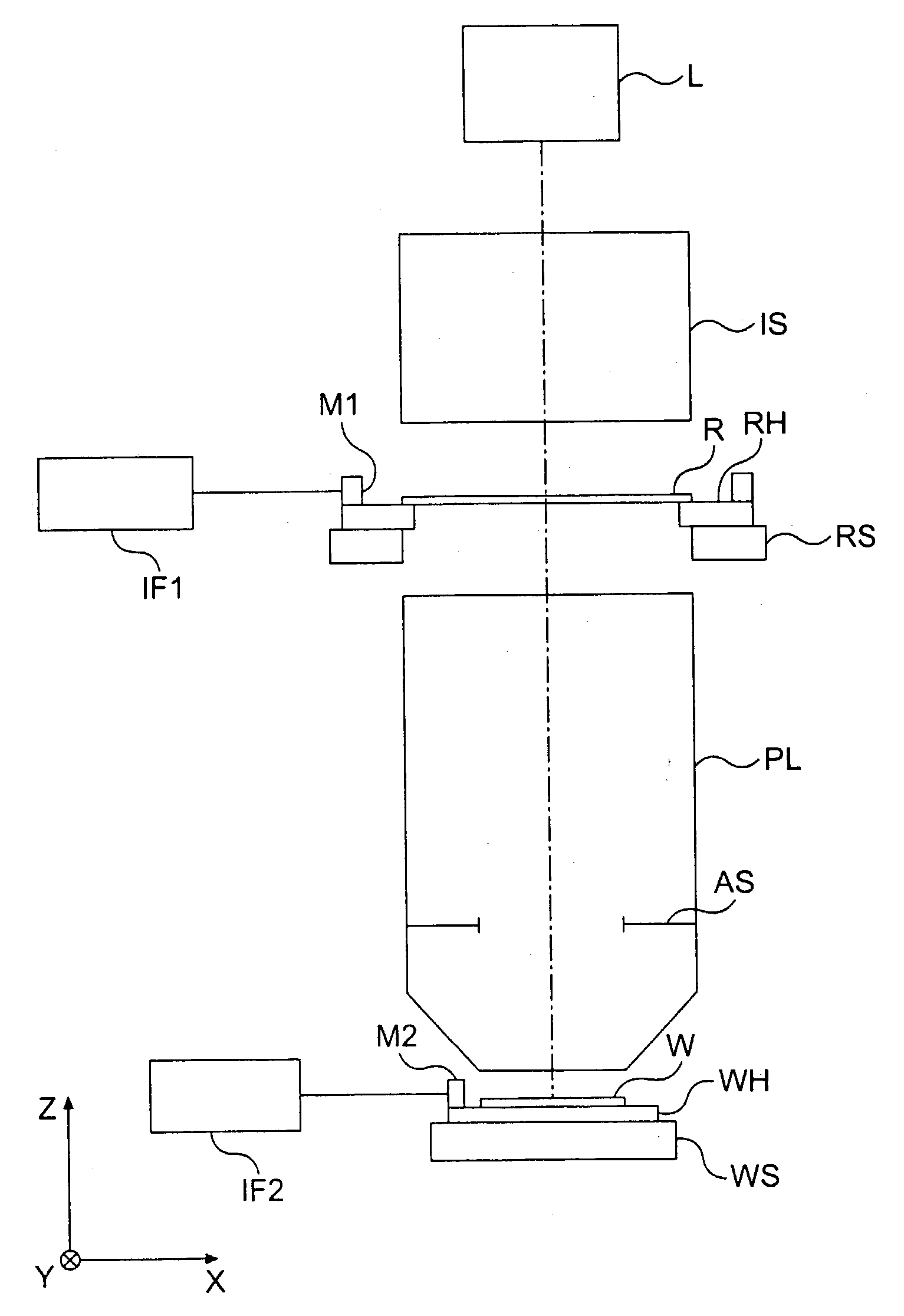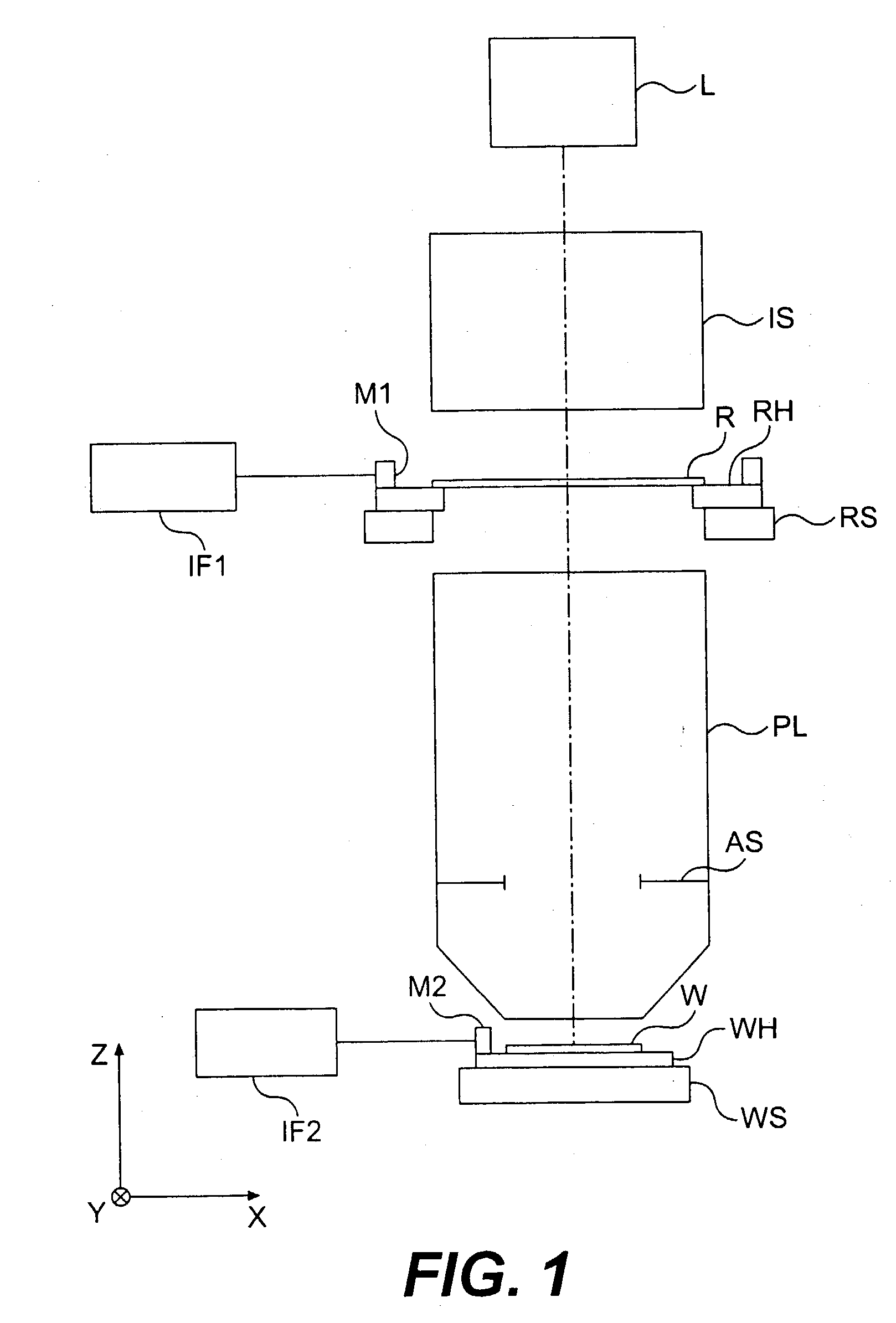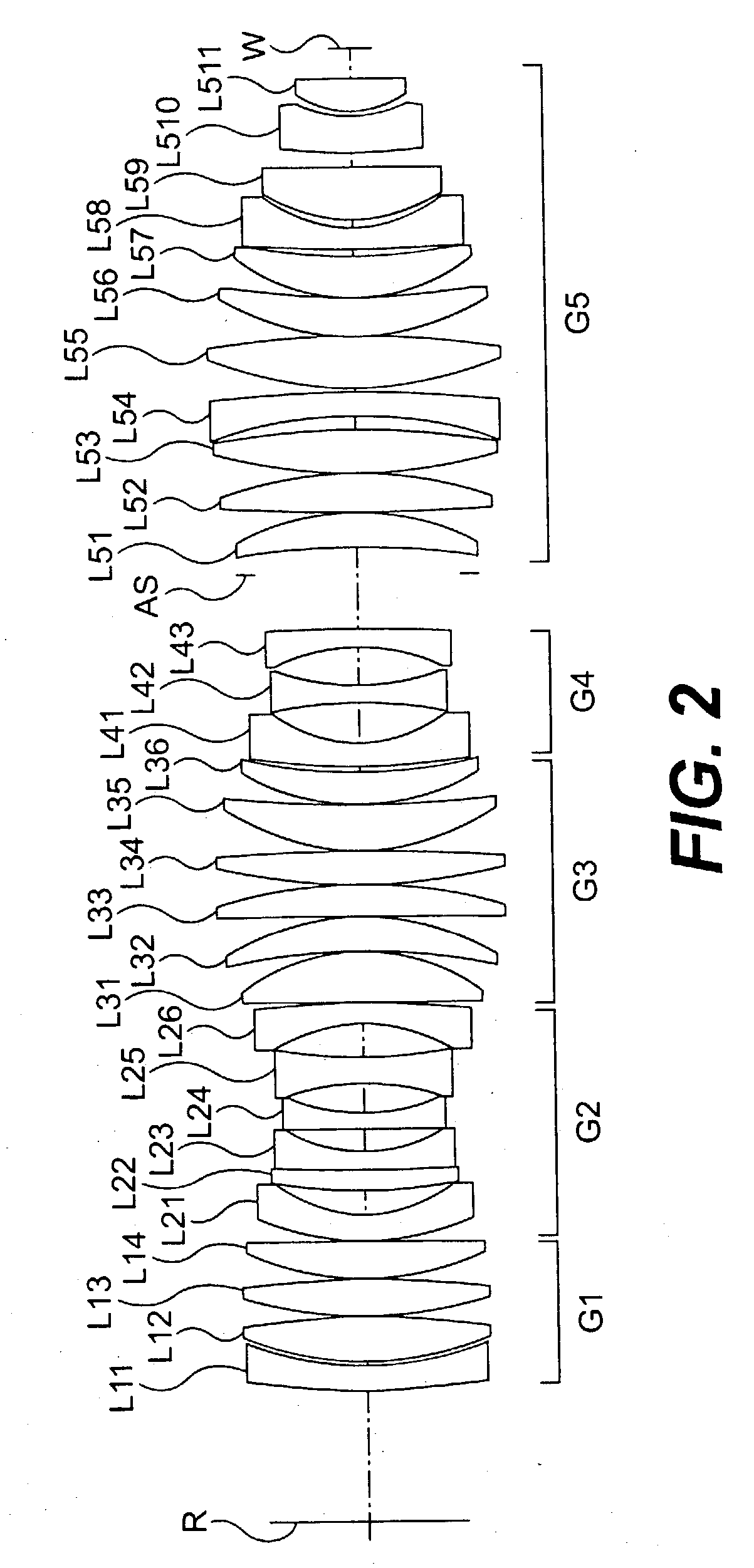Projection optical system, a projection exposure apparatus provided with the same, as well as a device manufacturing method
a technology of projection exposure and optical system, which is applied in the direction of microlithography exposure apparatus, printers, instruments, etc., can solve the problems of image warpage, reduced transmission factor of glass material, and limited availability of glass material that can be used to secure a high transmission factor
- Summary
- Abstract
- Description
- Claims
- Application Information
AI Technical Summary
Benefits of technology
Problems solved by technology
Method used
Image
Examples
first embodiment
[0066] FIG. 2 is a drawing that shows the lens construction of the projection optical system that relates to the This embodiment has, relative to the reticle R (object plane) as the first object, a first lens group G1 having a positive refractive power and with at least one negative lens L11; and a second lens group G2 having a negative refractive power; and a third lens group G3 having a positive refractive power; and a fourth lens group G4 having a negative refractive power; and a fifth lens group G5 having a positive refractive power with at least two negative lenses L54 and L58. Furthermore, it is both-sidedly telecentric on the wafer W (image plane) side for the second object and the reticle R (object plane) side.
[0067] Further, with the fifth lens group described above of the projection optical system of FIG. 2, the lens L59, L510, L511 are comprised so as to satisfy the conditional expressions (1) and (2). In this manner, a higher transmission factor can be secured in a lens...
embodiment example 2
II. PREFERRED EMBODIMENT EXAMPLE 2
[0094] FIG. 5 is a drawing that shows the lens construction of the projection optical system that relates to the second embodiment. It has, in order from the reticle R (object plane) as the first object, a first lens group G1 having a positive refractive power and with at least one negative lens L11; and a second lens group G2 having a negative refractive power; and a third lens group G3 having a positive refractive power; and a fourth lens group G4 having a negative refractive power; and a fifth lens group G5 having a positive refractive power with at least two negative lenses L54 and L58. Furthermore, it is both-sidedly telecentric on the wafer W (image plane) side for the second object and the reticle R (object plane) side.
[0095] Further, the lens L59, L510, L511 are comprised so as to satisfy the conditional expressions (1) and (2). In this manner, a higher transmission factor can be secured in a lens with a high energy density of the exposure l...
embodiment example 3
III. PREFERRED EMBODIMENT EXAMPLE 3
[0123] FIG. 8 shows the lens construction of the projection optical system that relates to a third embodiment of the present invention. It has, in order from the reticle R (object plane) as the first object, a first lens group G1 having a positive refractive power and with at least one negative lens L11; and a second lens group G2 having a negative refractive power; and a third lens group G3 having a positive refractive power; and a fourth lens group G4 having a negative refractive power; and a fifth lens group G5 having a positive refractive power with at least two negative lenses L54 and L58. Furthermore, it is both-sidedly telecentric on the wafer W (image plane) side for the second object and the reticle R (object plane) side.
[0124] Further, the lens L59, L510, L511 is comprised so as to satisfy the conditional expressions (1) and (2). In this manner, a higher transmission factor can be secured in a lens with a high energy density of the exposu...
PUM
| Property | Measurement | Unit |
|---|---|---|
| wavelength | aaaaa | aaaaa |
| diameter | aaaaa | aaaaa |
| diameter | aaaaa | aaaaa |
Abstract
Description
Claims
Application Information
 Login to View More
Login to View More - R&D
- Intellectual Property
- Life Sciences
- Materials
- Tech Scout
- Unparalleled Data Quality
- Higher Quality Content
- 60% Fewer Hallucinations
Browse by: Latest US Patents, China's latest patents, Technical Efficacy Thesaurus, Application Domain, Technology Topic, Popular Technical Reports.
© 2025 PatSnap. All rights reserved.Legal|Privacy policy|Modern Slavery Act Transparency Statement|Sitemap|About US| Contact US: help@patsnap.com



